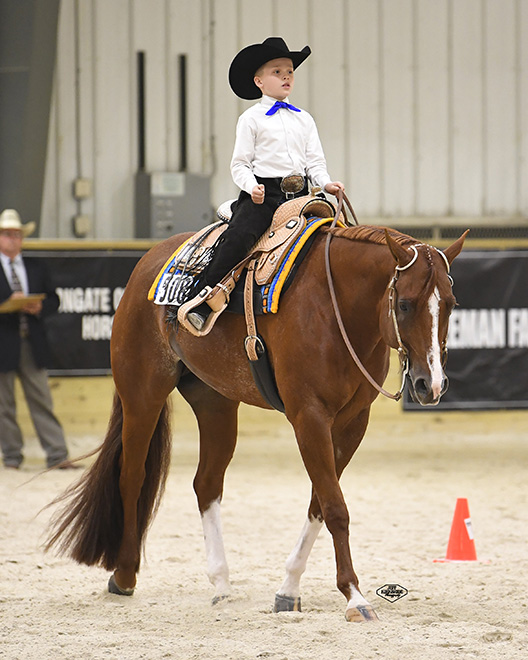
Only the Small Fry riders can put a smile on the faces of everyone on the show grounds, from judges to even the hardest competitors. Their glowing faces radiate their eagerness to learn.
“There is nothing more pure than that Small Fry rider who loves that horse and that’s what it’s about,” said Cody Parrish, a Georgia-based professional trainer. Parrish once was a Small Fry competitor himself winning the Small Fry Horsemanship at the All-American Quarter Horse Congress in 2002, when the class was limited to rail work. Today the division includes each of the all-around events.
“We can sometimes get caught up in competition and lose sight of what it’s really all about. The Small Fry riders remind us that it’s all about just loving the horse,” he said.
The introductory class has been a staple for local and open shows, but wasn’t part of breed shows until 1979 when it debuted at the All-American Quarter Horse Congress. Since then other circuits like the Tom Powers, the Big A and the National Snaffle Bit Association have added classes.

The class was less sophisticated then, according to Cody’s mom, Candy, a Pavo, Georgia trainer who was the first Congress Small Fry Western Horsemanship Champion with Mr Cody Chrome. The rider’s outfits were modest and the horses less specialized. She laughed as she recalled her retro shirt and big braids with silver conchos tied to the ends. The conchos were as lucky for her boys as they were for her, although they carried them in their pockets instead of tied in their hair. Cody won the class in 2002 riding Untouchable Too and his younger brother, Chase won in 2005, aboard Skipafied.
Tara Buckley, now a trainer in Preston, Connecticut, won the Small Fry Horsemanship at the Congress in 1985. Her daughter, Isabella, has been competing in Small Fry events at the Congress for the past few years and just moved up into the Youth Division.
“When I was a kid the only class we had was Small Fry Horsemanship and it was more like Western Pleasure because we didn’t have a pattern,” she said. “Now the kids have every event to go in, which I think is great because as they move up it gives them a lot of confidence.”
In addition to more Small Fry classes, the competition has advanced significantly in the division.
Today, the class is as glamorous as the adult classes. The girls are decked out in fitted chaps, tops shimmering with crystals and matching hats and chaps. The boys are wearing the latest trends in shirts and neckwear and the horses often veteran show horses with extensive resumes.
“The evolution of the class is reflective of our culture as a whole, where kids are more competitive in all sports,” Candy said. “Today’s kids are more competitive, more prepared and the horses are much more specialized.”
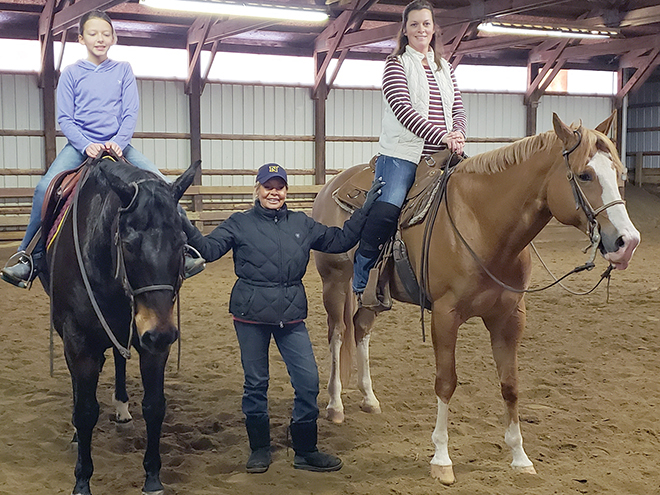
One thing that hasn’t changed – the lasting impact the class has on its participants. It often creates the first spark of interest that leads to lasting ties to the industry.
“It was a real confidence booster for me,” said Meredith Lohrenz.
When she was 9, she began riding lessons with Seville, Ohio trainer Darlene Trein.
“I made so many friends and learned about how the industry works. It was fun to come home with ribbons and trophies.”
Lohrenz continues to compete in amateur classes. When her daughter, Gabriella, was born she was eager to continue the tradition. At age 9, Gabriella started riding with Trein, first competing in Small Fry classes and has since moved up to 13 & Under with Hotta Treasure.
“Any chance that gives these youngsters an opportunity to participate helps keep them involved in the industry for a long time,” said Findlay, Ohio trainer Randy Wilson. Wilson’s daughter Whitney, now an amateur and non-pro, won the Small Fry Horsemanship at the Congress in 2001 with Iron It Out. He also coached Ava Coughlin who won the Congress Small Fry Horsemanship and Western Pleasure in 2014.
“It gives these kids a lot of good memories,” he added.
The perfect pair
Finding the right horse that will dutifully tote around a young rider who’s legs barely reach the bottom of the saddle pad is critical. Seville, Ohio trainer Darlene Trein describes these horses as heaven-sent. They have a heart of gold and willingly accept the rider’s short leg and small hand.
“The horse has to be kind because the first rides and show experiences are so memorable,” she said. “Many are older horses that had incredible show careers as youth and amateur horses and are recycled as walk jog horses.”
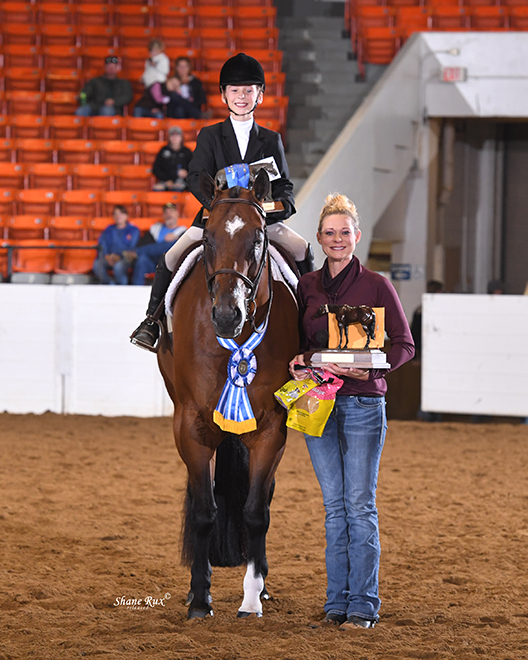
Dr. Laura Bracken, of Trafalgar, Indiana, competes in American Quarter Horse Association and National Snaffle Bit Association classes across the United States. Her daughter, Kenzie has been dominating Small Fry classes at the Congress the past two years. Bracken said safety is a priority when selecting a Small Fry horse suitable for her daughter to show.
“Most importantly, I look for a horse that has no spook in it, that gets along well with other horses, and can handle being crowded in the show pen,” Bracken said. “A Small Fry horse must be forgiving to mistakes their young handler will make.”
Valerie Gabor, the mother of Small Fry competitor Adeline, of Madison, Ohio, also lists safety first when searching for a Small Fry horse for her daughter.
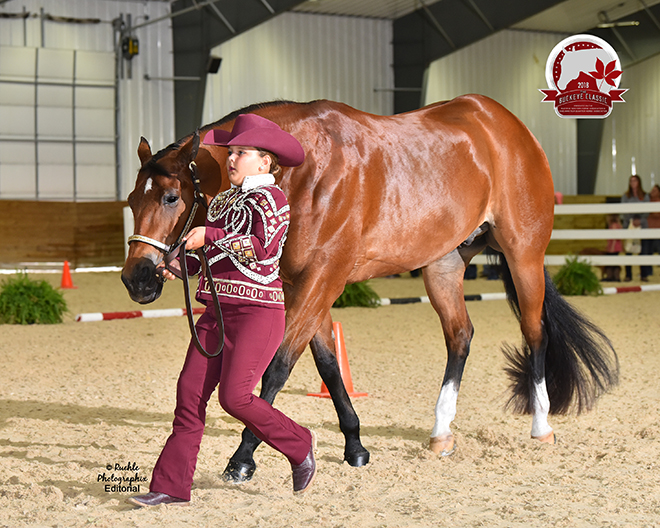
“I have to have confidence that a horse is going to take care of her in the show pen and obviously, he has to have some natural ability.”
IronGate Quarter Horse’s trainer Judd Paul, of Croton, Ohio, agrees that temperament is the most important factor, but that the horse’s age may vary based on the horse’s individual demeanor and experience. Paul’s daughter Allie won the Small Fry Showmanship at the Congress three years in a row. Her first horse was Genuine Sheik, a horse in his mid-to-late teens. However, his client Emma Gore won the Small Fry All-Around Award tin 2016 and 2017 with Hes Suddenly Handsom and My Only Good Shoes, both closer to 10-years-old.
“Small Fry horses have to have a good mind, but they also have to have good movement, especially to do well at the Congress,” he said. “Emma’s horse was a great jogger and versatile.”
Summerton, South Carolina trainer Kristy Starnes had a specific set of criteria in mind when looking for a small fry horse for her son Logan. She didn’t want him to have the same experience she had as a Small Fry competitor at the 1991 Congress. As she passed another rider, her horse bit the one she was passing.
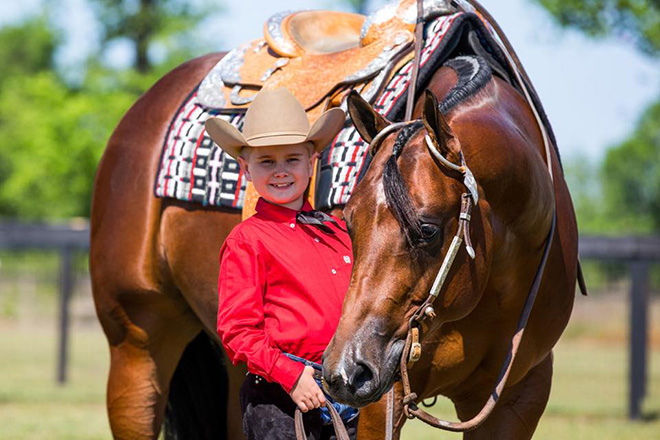
“Of course, I didn’t win anything,” she laughed. “But the experience helped me ensure that my son got a better horse to start with than what I was working with.”
Mike Hersberger gave the family Certainly A Classic, the horse Logan Starnes rode to a third place in the Small Fry Western Pleasure at the 2017 Congress.
“She would do anything Logan asked,” she said.
Small Fry horses do more far more than tote around a young rider. They teach self-confidence and help them learn the correct body position. That only happens when paired with a horse they fit and connect with.
“Small Fry horses have to have a rhythm and be able to hold itself,” Candy said.
“They have to have good self-carriage and be a naturally good jogger.”
Wilson adds that the horse needs to be a lot more forgiving while a child is first learning to ride.
“A green horse and a green rider is not giving the walk trotter a chance,” he said. “Sooner or later something will happen and they’ll get scared.”
Older horses tend to better suited for small fry riders, but every horse is an individual and a good-minded, well-trained younger one can fit the bill. Last year, Logan switched horses and rode 4-year-old Certainly Flatlined, a horse the Starnes have raised and trained. They won the Small Fry Western Pleasure classes at the Tom Powers, the Big A, the Congress and the NSBA World Show. Logan rides three days a week and Kristy rides the horse the other days to keep the horse tuned up so not getting dulled out and ignoring cues.
“We will let Logan push through when the horse is not tuned up sometimes because we want him to learn and it keeps his ego in check by learning to work through challenges and that it’s not always easy or perfect,” she said.
Logan already understands how fortunate he is to have trainers as parents.
“It’s nice to have parents as horse trainers because then I don’t have to go somewhere else to take lessons,” Logan said.
Selecting just the right show partner for the industry’s least experienced participants can be a daunting task. And finding the right coach can be just as challenging. Jessica Gilliam, of Greensburg, Indiana, should know. She is an AQHA judge and the mother of Shane, now competing in the Small Fry division.
“As a judge, I would say find a horse that syncs with your child and allows them to feel confident and build confidence,” she said. “As a mother, I would say find someone to help your child. Learning from other people is a life skill, and it’s important for young exhibitors to be able to follow orders and understand what other people are asking.”
Show time
Placing a Small Fry class may be the toughest job of all.
“Every Small Fry rider wins the cuteness award,” Paul said. “But at the end of the class, judges still have to distinguish between the top finishers and those with a little more work to do.”
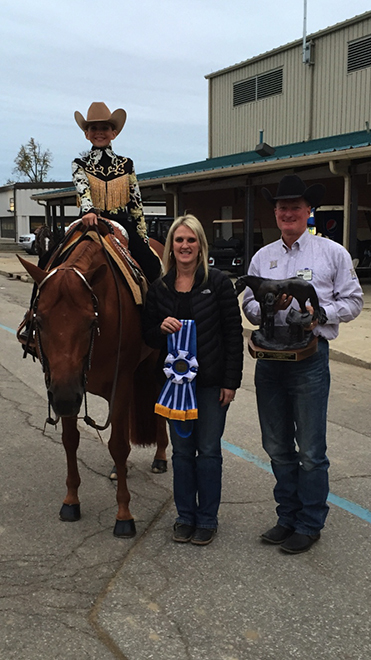
Wilson agrees.
“I try to take the child thing out of it and place it like other classes,” Wilson said. “I may see a really adorable kid, but can’t be real forgiving if they are messing up. At the same time, I try not to be over critical because I know they will make mistakes.”
By the time a class is through, the Top 5 tend to separate themselves from the others in the class, according to Wilson. Paul adds that the riders who finish at the top of the judge’s scorecard are ones who have typically been riding for a while and it’s apparent they have a connection with the horse.
“The showman will pop out,” Wilson said. “Even at that age in the Horsemanship you’ll see kids come in with their legs clear up on the dashboard so you know they just aren’t going to win.”
When the Small Fry classes began 40 years ago, it was designed to give young kids, many of them children of horse trainers or amateur competitors, an opportunity to participate. The class has evolved into more than that, a stepping stone for the 13& Under and Novice divisions.
“At home, we’re not just teaching them to go around on the rail, we teach them to do figure eights and go around cones to teach control,” Wilson said. “That also helps with the eventual transition into the loping classes.”
Usually before their time is up in the Small Fry they want to lope. Trein prefers to pair a child with a horse that can lope when possible. It teaches the kid the feeling of the lope without the big bold feeling of a long-strided horse.
“I’m thrilled to have a Walk-Trot horse that will also lope so I can teach the kids the feeling so that if anything happens in the show pen they know how to bring them back to a stop or walk. Sometimes a great walk trot horse doesn’t lope so I will put them on another horse that has that gear,” she said.
Like with older riders, consistency is key for small fry competitors. A steady program at home helps prepare the young rider to react when things go astray in the show pen.
“Consistency helps kids stay focused at Congress so they know what to do,” Trein said. “The kids can read it in their trainer’s voice or parent’s voice when they get nervous for them. The best is to stay calm and remind them not to do anything different than they would at home.”
Staying grounded
At their core, small fry classes are designed to give the industry’s youngest riders a confidence boost. Riding and succeeding in the “big” venues their parents and trainers compete in is exhilarating. Winning at such a young age can give rise to inflated egos if not kept in check. After Logan won multiple Small Fry classes last year at the age of 9, Kristy says he’s moving up to the 13 & Under this year.
“He knows he has to work harder and step up to the plate because he’ll be showing against kids who are much older than he is,” Kristy said. “He is also learning it’s not just about showing and winning. His horse had some thrush so every day after school he has to go to the barn and clean his hooves and put the medicine on it rather than me doing it for him.”
Buckley thinks children should forge a special connection with their horse.
“It is important to let the kids bathe their horse and work with their horse instead of having someone else do it,” she said. “This sport is a great way for kids to learn responsibility.”
Kristy adds that supporting Logan’s interest in other activities like basketball and Taekwondo keep showing in perspective while teaching lessons that can translate into the show pen.
“Taekwondo is great for discipline,” she said. “It’s totally different than horse showing but it stresses the importance of the basics even as you progress up through the levels.”
Paul emphasizes the importance of letting the child’s interest guide the process. His daughter Allie, for example, didn’t want to practice anymore, whereas Gore rides two to three days a week and wants to work hard to improve.

“As parents, we aren’t going to let her show just to show. She has to put the time in practicing at home. That sets a good example for other kids. She still goes to the shows and has fun with the other kids. When she’s ready to come back to showing, she’ll ask.”
Bracken says it should ultimately be the child’s idea whether they would like to show.
“If children have no desire to show, parents should not make them,” she said. “My daughter has always liked horses, and we encouraged her to show from a young age but not until she was ready.”
When Parrish’s sons were experiencing early success, she says it was the family’s faith that kept things in check. Keeping the boys’ egos in check is a joint effort between Candy and Brett and their faith in God.
“We have always taught our kids to go out and do the best they can every day and that they may win today, but that it may not go that way tomorrow,” she said.
Making memories
The Small Fry classes are a fan favorite, stealing the spotlight at every major horse show that hosts them. Giving these tiny riders a glimpse of the glitz and the hard work is part Elden Fredenburg cultivating a strong future for the industry.
“It’s such a cute thing to see them all together before a class,” Trein said. “At Congress last year, there was one little girl who walked up and introduced herself to everyone else. They are the future of our industry.”
Small Fry classes also help prepare young exhibitors for long careers in the show pen.
Gilliam said participation in Small Fry classes helps prepare young to move up into the 13 & Under and Novice events.
“Kids are able to start getting ready for the 13 & Under and the Level 1 classes, at a level that they can start learning the pattern and all of the prep work it takes,” Gilliam said.
“A lot of times little kids struggle doing that many classes, so it’s important to know what your kid can do and whether you should push them or not.”
And there are many life lessons to be learned on the show grounds. Above all, Gabor said, showing horses teaches kids responsibility.
“It teaches them that hard work pays off,” she said. “They have to put in the hours to build a trust relationship with their horse and rider. It also teaches them camaraderie and the competition part of it is also good for them. They learn that we compete during the day but we’re friends at night.”
For those who have come up through the ranks of small fry classes, they look back on their experiences with fond memories. Whether it was family time or the inspiration to find their calling as a professional.
“I really enjoyed the time I got to spend together with my mom coaching me to keep heels down and chin up,” Cody said. “Small Fry sparked the competitive drive in me and got me really intrigued in trying to figure out how I can make horses do this or that better and how I can do better. I’m still learning, but it started back in those classes.”
Small Fry classes are like passing the torch from one generation to the next. The meaning runs much deeper than a love of horses.
It’s a way of sharing a connection with the past while looking to the future.
“It’s legacy for us to continue,” Lohrenz said. “I’m really looking forward to what’s next.”



You must be logged in to post a comment Login